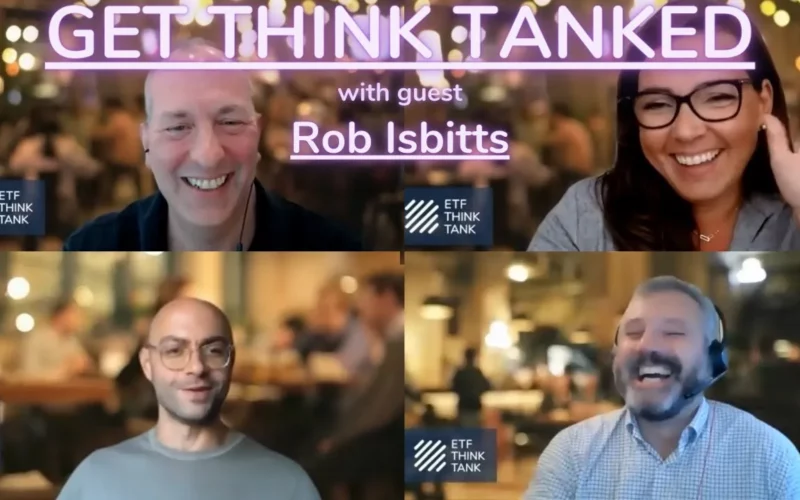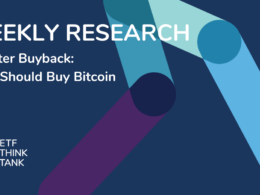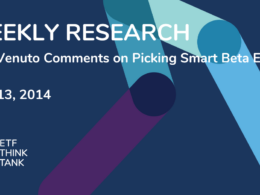Last week, my colleague did a great job highlighting the difference between the ETF wrapper structured as a ‘33 Act rather than a ‘40 Act legal structure. We often write about markets, the Fed, and investments in this blog. We also often highlight how structure matters when differentiating between passive and active investing, and the blurry line surrounding what is referred to as “smart beta.” What we almost never speak of is the human element involved in the critical strategic decisions that CEOs are making that affect the lives of hundreds of thousands of employees and investors. In my 35-year career, I have been fortunate to have listened to and met more than my fair share of CEOs and CFOs. It is for this reason that I found the book “CEO Excellence: The Six Mindsets That Distinguish the Best Leaders from the Rest” written by Carolyn Dewar, Scott Kellar and Vikram Malhotra, helpful in creating a “playbook” of some critical questions that help answer the question: What does a CEO really do? Afterall, few consultants and portfolio managers have the access or experience, let alone the resources, that these three McKinsey & Company consultants have, so the information should be well respected and analyzed.
It is also worth pointing out a couple of key tidbits:
- According to the book, CEOs who rank in the top 20% deliver 2.8 times more total return to shareholders during each year of their tenure versus the average performers. They are “alpha” generators in the purest form – delivering some $10,000 of value over $1,600 by the S&P 500 during a 10-year cycle.
- The CEO pool that was screened for the book included 7,800 CEOs from the McKinsey & Company proprietary database, across 25 years of data. 3,500 of those CEOs were running public companies.
- As a firm, McKinsey & Company dedicates $700 million worth of resources towards research around consulting and analytics for CEOs, 80% of which lead Fortune 500 or Global 1000 companies.
While the process narrows the top CEOs to a small list of only 54, data geeks will appreciate the authors’ estimation that “the economic value created by the group of 200 leaders created excess value over their peers of approximately $5 Trillion. That’s the equivalent of the annual gross domestic product of the third largest country, Japan.”[1]
What’s a CEO to do Under Current Conditions
These are unprecedented, challenging times for investors. Macro-conditions set a tone of pessimism and risk aversion. Indices such as the Long term Treasury Bond (TLT) reflect a tone of unparalleled historical conditions where liquidity is down so dramatically for both the Treasury and the S&P 500. According to my colleague Michael Gayed, never have we seen both the Treasury and the S&P500 be down together in such a dramatic fashion. What action steps is a CEO supposed to take as an investor in the business when the potential bursting of a 40-year bond bubble creates such potential dire economic conditions? Therefore, investing with the most extraordinary CEOs may be the answer today, but who is to say who those CEOs are, beyond those who consult to them?

There will be much postering about upcoming downward revisions for S&P 500 earnings in 2023 and 2024. The point of fact is that that CEOs who are currently preparing for the challenges in 2023 and 2024 need to make hard decisions that align with the book’s 6 mindsets that the best CEOs are judged by. The book summarizes them as follows:
Mindset #1 – Direction setting – Be bold. Growing in tough times requires decisiveness in a CEO’s vision and strategy, but resources need to be harnessed, available, and properly allocated.
Mindset #2 – Alignment of cultures and people drive commitment and clarity of principles.
Mindset #3 – Mobilizing people through empowered leaders with defined outcomes and commitments.
Mindset #4 – Engage – To seek help from directors who understand the business and can add value when called upon.
Mindset #5: – Connections – Start with “why?” Great CEOs connect with stakeholders to understand their expectations and concerns and make sure to align accordingly.
Mindset #6 – Effectiveness – Do what only you can. CEOs need to prioritize the most critical issues, focus on what they need to do, and delegate any remaining tasks.

Granted, much of this sounds like consulting advice, like “buy low and sell high.” The difference and value here is that many of the CEOs who are mentioned in the book are still in place meaning investors should carefully watch and listen to the bold steps they are taking. We would expect that most will not pull back on technology spending in a meaningful way, but almost all great CEOs will emphasize how this spending is aligned with productivity, accountability to client service, or with the overall transformation of the company’s long-term core mission. We also emphasize that many of the CEOs highlighted in the book are running global businesses, so the re-allocation of resources is an opportunity to reposition globally or re-accelerate a business that is feeling different levels of economic headwinds.
The CEO’s job is difficult, and we at the ETF Think Tank are not reversing our position and becoming stock jockey cheerleaders. We do, however, believe in active management, whether that comes in the form of portfolio adjustments as economic conditions change, thematic investing which often requires an understanding of the underlying holdings, or high conviction strategies like Davis Funds. Note that these Funds have overweighted positions with CEOs at DBS Group (DBS), JP Morgan (JPM) and Alphabet (GOOG). We would also suggest watching closely what the CEOs do, like Adobe’s CEO Shantanu Narayen, who just announced a bold move to acquire FIGMA for $20 billion. Critics may be right about the very rich price (50x times revenues), but price may matter in the absence of short term value. Clearly, this is an example of a bold move!
Bold moves can be made at all points in the economic cycles and clearly, when cost of capital is cheap, markets in the short term are more forgiving, but ultimately the goal of every CEO is to win in the long term. This point is made clear in CEO Excellence, with Netflix’s Reed Hastings’ quote during a discussion with a stakeholder back in 2002. He says, “the dream 20 years from now is to have a global entertainment distribution company that provides a unique platform for film producers and studios.” Clearly, after delivering in these past 20 years, Reed needs to be watched for his next “bold” move. CEOs who embrace innovation and transformation know how to win! They are also not likely deterred by economic cycles or fears around market conditions. The question is whether or not investors should view these cycles as an opportunity. Like CEOs, investors and career-minded people need to think long term, not just about retirement, but about how they can be positioned as winners in the end. The CEO of Cadence Design System, Lip-Ba Tan, shares the following story in the book about an investor’s advice on how to become the best stock in a portfolio. He says, “first of all you have to be mission critical to your customers, not just nice to have. Second, you have to be a category leader – number one or number two in your product lines. Third, your current total available (TAM) is only worth $10 billion. How are you going to grow to be a $150 billion platform – how will you expand into new markets?”[2]
In October, I will have the fortunate opportunity to interview one of the authors, Vikram Malhotra. Hope you will buy a copy of the book. Feel free to send questions my way to dweiskopf@torosoinv.com.
[[1] CEO Excellence, Page 6Disclosure
All investments involve risk, including possible loss of principal.
This material is provided for informational purposes only and should not be considered an individualized recommendation or personalized investment advice. The investment strategies mentioned may not be suitable for everyone. Each investor needs to review an investment strategy for his or her own particular situation before making any investment decision.
All expressions of opinion are subject to change without notice in reaction to shifting market conditions. Data contained herein from third party providers is obtained from what are considered reliable sources. However, its accuracy, completeness or reliability cannot be guaranteed.
Examples provided are for illustrative purposes only and not intended to be reflective of results you can expect to achieve.
The value of investments and the income from them can go down as well as up and investors may not get back the amounts originally invested, and can be affected by changes in interest rates, in exchange rates, general market conditions, political, social and economic developments and other variable factors. Investment involves risks including but not limited to, possible delays in payments and loss of income or capital. Neither Toroso nor any of its affiliates guarantees any rate of return or the return of capital invested. This commentary material is available for informational purposes only and nothing herein constitutes an offer to sell or a solicitation of an offer to buy any security and nothing herein should be construed as such. All investment strategies and investments involve risk of loss, including the possible loss of all amounts invested, and nothing herein should be construed as a guarantee of any specific outcome or profit. While we have gathered the information presented herein from sources that we believe to be reliable, we cannot guarantee the accuracy or completeness of the information presented and the information presented should not be relied upon as such. Any opinions expressed herein are our opinions and are current only as of the date of distribution, and are subject to change without notice. We disclaim any obligation to provide revised opinions in the event of changed circumstances.
The information in this material is confidential and proprietary and may not be used other than by the intended user. Neither Toroso or its affiliates or any of their officers or employees of Toroso accepts any liability whatsoever for any loss arising from any use of this material or its contents. This material may not be reproduced, distributed or published without prior written permission from Toroso. Distribution of this material may be restricted in certain jurisdictions. Any persons coming into possession of this material should seek advice for details of and observe such restrictions (if any).











